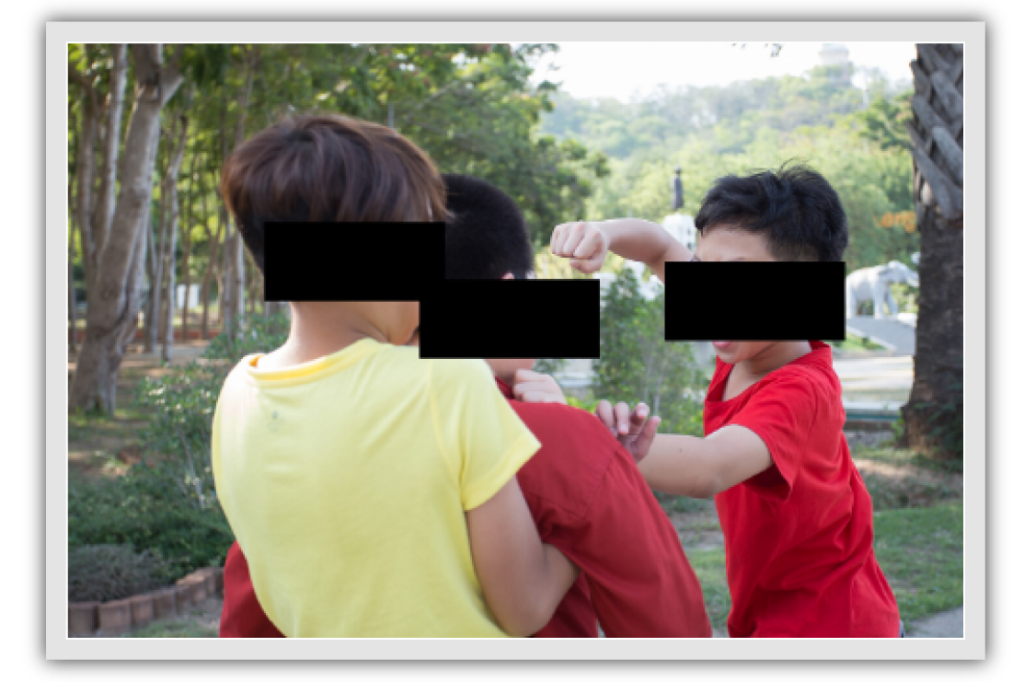“Alright, Break it Up!”: FERPA and Digitally Editing Video of a School Fight

By: Attorney Sven W. Strutz – Weld Riley, S.C.
On an instinctual level, it’s the call that no student migrating between classes can resist: “Fight! Fight!”
With that, a pack of students form a ritual circle to bear witness to this primal contest. Maybe a punch or two is thrown. Perhaps a nose bloodied. Or clothing torn. Like life in the state of nature, the fight is nasty, brutish, and short. Inevitably, the combatants are separated and the spectators admonished: “Get back to class!”

In decades past, the skirmish would live on only in the stories told of that day. The witness accounts might be contradictory. Who started it? Who finished it? Who could say? But it’s the 21st Century now.
And in the 21st Century school hallway… There might be a video.
A video recording of a fight between students constitutes an “education record” under FERPA (the federal Family Educational Rights and Privacy Act) and a “behavioral record” under Wis. Stat. § 118.125. Of course, this is assuming that the video is “maintained” by the the school district in the first place (a cellphone video made by a student witness, for example, is outside the scope of this article). The legal problem arises because the fight video is likely a student record for both of the fight’s participants—and under the law, the parent of “Student A” would not automatically enjoy unrestricted access to a student record pertaining to “Student B.” (As an aside, the video would probably not be a record pertaining to other “background” students tangentially depicted in the video if they were not participating in the fight or otherwise violating any rules.)
What should happen when a parent of one child requests a copy of the fight video from the school? What if the parent of the other child does not consent or actively opposes the disclosure?
FERPA affords parents and eligible students the right to access their education records and the right to have some control over the disclosure to others of personally identifiable information from their education records. On the state level (and in broad strokes), Wis. Stat. § 118.125 fulfills a very similar function. For the sake of brevity, this article will focus on FERPA rather than the Wisconsin statute.
In a December 7, 2017 United States Department of Education letter, the Director of Student Privacy Policy discussed editing certain types of records to produce information that the parent is entitled to receive upon request but to withhold information the parent is not entitled to receive. The Department’s letter stated: “when an education record contains information on more than one student, the parent may inspect and review or ‘be informed of’ only the specific information about his or her own child, unless the information about the other student or students cannot be segregated and redacted without destroying its meaning.” With certain types of paper records, editing to remove information about other students is a relatively simple matter. For example, a student witness’s name could be redacted from a written statement concerning a fight. But video records present additional legal and technical challenges for schools.
The Department’s 2017 letter pertained to a video depicting a multi-student hazing incident. One student was the victim. Two were the primary perpetrators. And some additional students served as “lookouts.” In its opinion, the Department considered the possibility of altering the video to digitally obscure the faces of the student participants. However, the school said that such an alteration of the video was not technically or economically feasible. The Department would not require the school to do what was technically impossible, but it did state: “if it is possible for the District to disclose only a portion of the video in a way that would fully depict the student’s involvement in the hazing incident, then such segregation of information about other students would be required.”
Finally, the letter said that parents would not be entitled to receive a copy of the video showing students other than their own child. “FERPA requires schools to provide a requesting parent or eligible student with the opportunity to inspect and review his or her child’s … education records, it does not require schools to provide copies of education records” (absent special circumstances).
In addition, there is a FERPA case from a state court in Utah, Bryner v. Canyons School District, 351 P.3d 852 (Utah App. 2015), that required the school district to create a redacted copy of a fight video (where the faces of the students other than the child of the requester would be blurred-out). The decision permitted the school to require the requesting father to pay for the cost of altering the video in that manner. The Utah court said that the father was only entitled to inspect a portion of the requested material that pertained to his own child. (It is worth noting that the requirement that the father pay the redacting costs was imposed pursuant to Utah’s Government Records Access and Management Act, a public records law. It was not a FERPA issue.)
So how should schools handle videos of fights and other similar incidents in the context of a FERPA or Wis. Stat. § 118.125 request for those student records? I suggest the following:
Plan A – The school should try to get the parent(s) of both children on board with the other child’s parent(s) viewing the video. Both children’s parent(s) would sign a written consent form allowing the parent(s) of the other child to come in and view the video. If such consent is given, the parent(s) should sit down with school officials—separately or all together—to discuss the video and the incident. Since this would be a “behavioral record” (as defined by Wis. Stat. § 118.125(1)(a)), the correct procedure would be for the parent(s) to be shown the video “in the presence of a person qualified to interpret the records” (i.e. a principal or administrator). If consent is obtained from each child’s parent(s), the school would be protected from a claim that anyone’s rights had been violated in sharing the video.
Plan B – If the parent(s) of one child cannot be convinced to permit the parent(s) of the other child to view the video, the school can explore with its IT department the possibility of producing two separate versions of the video that each obscure the face of one of the fight participants. With the assistance of the Weld Riley firm’s IT department, I have conducted some preliminary research on whether such a modification of a video file is technically feasible. There are several software options for digitally obscuring portions of a video file (and some of those options purport to be free of cost). https://windowsreport.com/face-blurring-software/ Despite the Utah case, it likely would be safer not to charge the requesting parent(s) for the redacting. The Utah case is not mandatory precedent here in Wisconsin and, moreover, the Wisconsin student records statute (Wis. Stat. § 118.125) does not include any requirement for the payment of costs when accessing a student’s records.
Plan C – If both Plan A and Plan B fail, it may ultimately be appropriate for the requesting parent(s) to be shown an unaltered version of the video, even if there is no consent by the parent(s) of the other child. However, the parent(s) should not be provided with a copy of the video. There is some safety in Plan C as it is consistent with the current FERPA advice given by the Department of Education. However, the Department’s advice on these questions has changed a bit over time. And there is no guarantee that it will not change again in the future. As such, Plan A and Plan B are typically significantly preferable options.
There. We’ve grappled with the issue. And pounded it into submission. Now get back to class.

